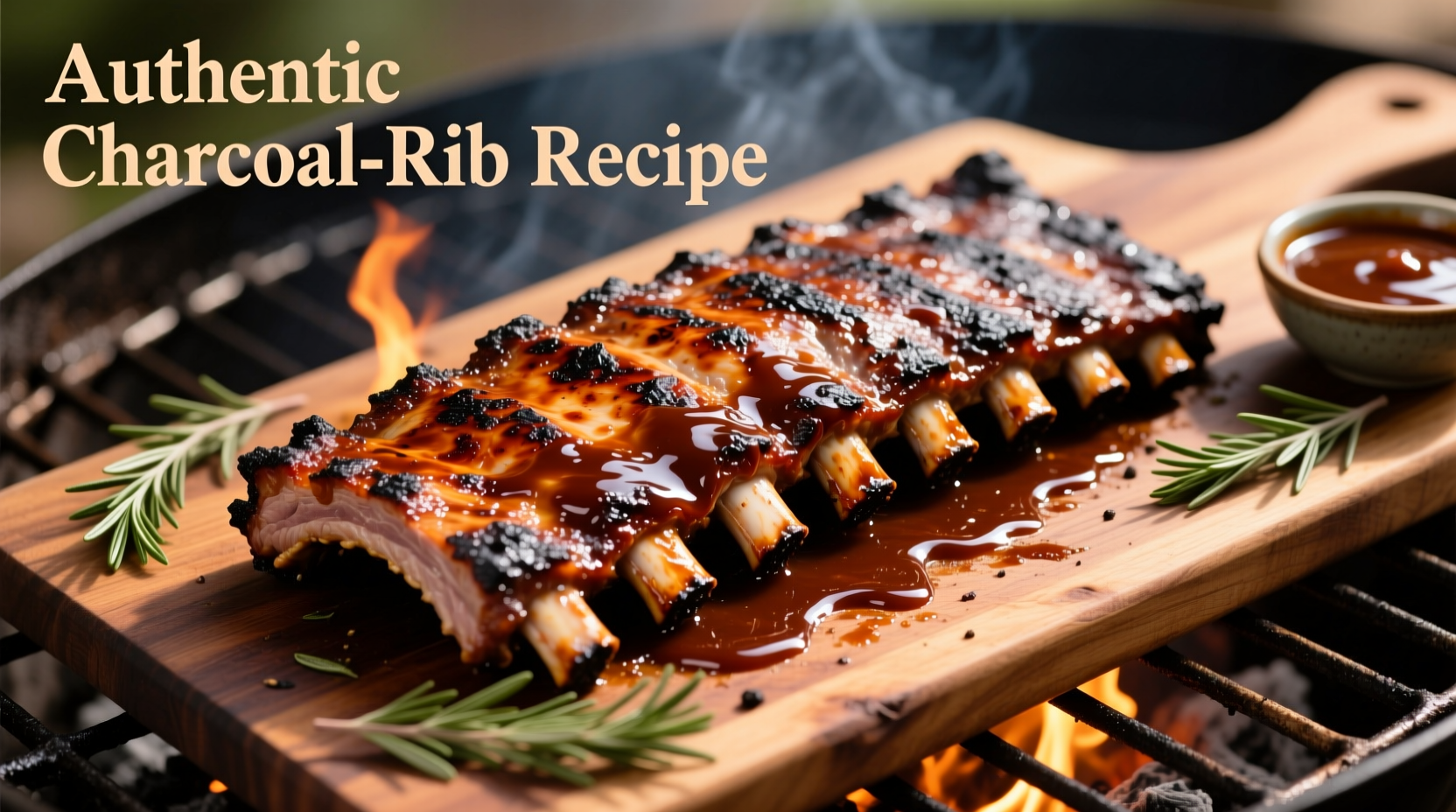Why Charcoal Grilling Creates Unbeatable Rib Flavor
Charcoal grilling imparts a distinctive smoky flavor that gas grills simply can't replicate. The natural wood smoke interacts with the meat's surface, creating complex flavor compounds through the Maillard reaction while slowly rendering fat for incredible tenderness. Professional pitmasters consistently choose charcoal for competition ribs because of its superior temperature control and authentic smoke profile.
Essential Equipment Checklist
Before you start, gather these critical tools for charcoal rib success:
- Large charcoal grill (minimum 22-inch diameter)
- Chimney starter for consistent ignition
- Meat thermometer (dual-probe recommended)
- Wood chunks (hickory or applewood)
- Aluminum foil or butcher paper
- Heat-resistant gloves
| Rib Type | Best For | Approx. Cooking Time | Distinctive Flavor Profile |
|---|---|---|---|
| St. Louis Cut | Beginners | 5-6 hours | Balanced meat-to-fat ratio, uniform shape |
| Baby Back | Quick cooking | 4-5 hours | Sweeter, leaner, more tender |
| Spare Ribs | Traditional BBQ | 6-7 hours | Richer flavor, more marbling |
Selecting and Preparing Your Ribs
Start with high-quality ribs featuring even marbling and a bright red color. Remove the membrane from the bone side using a butter knife to lift the edge, then pull it off completely with a paper towel for better texture and seasoning penetration. Apply a generous dry rub 12-24 hours before cooking - this allows flavors to penetrate while helping form the perfect bark.

Mastering Charcoal Temperature Control
Proper temperature management separates good ribs from great ribs. Create a two-zone fire by piling lit charcoal on one side of the grill. Add 8-10 wood chunks to the coals for authentic smoke flavor. Maintain 225-250°F throughout cooking by adjusting the air vents - more open for higher temps, more closed for lower. Check charcoal levels every 90 minutes and add 5-6 fresh coals as needed.
The 3-2-1 Cooking Method Timeline
This proven technique delivers consistently tender ribs:
- First 3 hours: Place ribs bone-side down on the indirect heat side. Maintain 225°F, spritz with apple juice every 45 minutes to keep surface moist
- Next 2 hours: Wrap tightly in foil with 1/4 cup liquid (apple juice, broth, or vinegar mix). This steams the ribs, breaking down connective tissue
- Final 1 hour: Unwrap, return to grill meat-side up, and apply barbecue sauce. Cook until internal temperature reaches 195-203°F
Avoiding Common Charcoal Rib Mistakes
Many home grillers make these critical errors that ruin otherwise good ribs:
- Flare-ups: Move ribs to cooler part of grill immediately when flames appear
- Over-smoking: Limit smoke exposure to first 90 minutes to prevent bitter flavors
- Peeking too often: Every lid lift adds 15-20 minutes to cooking time - resist checking!
- Rushing the process: True barbecue requires patience - don't increase temperature to speed things up
Resting and Serving for Maximum Juiciness
After cooking, let ribs rest wrapped in foil for 30-45 minutes. This crucial step allows juices to redistribute throughout the meat. When serving, cut between bones with a sharp knife for clean presentation. Pair with classic sides like coleslaw and baked beans for a complete barbecue experience.
When This Method Works Best
The 3-2-1 charcoal method excels for traditional barbecue occasions but has specific context boundaries. It's ideal for weekend cookouts where you can monitor the fire, but less practical for weeknight dinners due to the 6+ hour timeframe. This technique works best in temperatures between 50-90°F - extreme heat requires more frequent charcoal adjustments, while cold weather significantly extends cooking time. For competitive barbecue or special occasions, this method delivers restaurant-quality results that impress even experienced pitmasters.
Troubleshooting Your Charcoal Rib Results
Encountering issues? Here's how to fix common problems:
- Dry ribs: You likely didn't maintain consistent temperature or skipped the wrapping stage. Next time, check thermometer placement and ensure tight foil wrapping
- Bitter taste: Probably used green wood or excessive smoke. Stick to properly seasoned wood chunks and limit smoke time
- Uneven cooking: Position ribs with thicker portions toward the heat source and rotate periodically
- Sticking to grill: Clean and oil grates thoroughly before cooking, and ensure proper temperature before placing ribs











 浙公网安备
33010002000092号
浙公网安备
33010002000092号 浙B2-20120091-4
浙B2-20120091-4